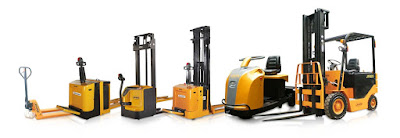Crash
Course on Manufacturing Industry
You are using a plethora of
materials every day. Shops are awash with clothes and articles that are unique,
utilitarian, and novel. There are also antique shops/many-splendored exhibitions
that are catering to bohemian spirits and people with eclectic taste. Be it
children or geriatrics, commercial space has something for everyone. From racks
in supermarkets to racks in warehouses, commercialization has provided everything
under the sun for everybody.
Image Credit - Smedunia.in
In the construction industry, monorails manufacturers in Bangalore SGF
Fab industries are pushing the envelope when it comes to affording top-hole
construction equipment, cranes, and material handling equipment.
Double
girder gantry - goliath manufacturers SGF Fab provide cranes that are used in
transporters, trenches, erection of bulky equipment, shifting of heavy loads,
mine quarries, and heavy fabrication
units. With
the capability of lifting loads up to 10 T,
double girder EOT cranes are versatile
and robust.
Brass
Tacks
What
is manufacturing?
To start with, what exactly is manufacturing? Manufacturing is the
production of goods in large quantities after processing the raw materials into
more valuable products.
Why is manufacturing
important?
· Agriculture forms the backbone of our
economy. The manufacturing industries help in modernizing agriculture. Apart
from this, manufacturing industries also reduce the heavy dependence of people
on agricultural income. This becomes possible because of the creation of new
jobs in secondary and tertiary sectors.
·
Industrial development helps in
eradicating unemployment and penury.
· Export of manufactured goods expands trade
and commerce and brings in much needed foreign exchange.
·
A country with high level of manufacturing
activities becomes prosperous.
Impact on GDP
The
share of manufacturing sector in the GDP (Gross Domestic Product) has been stagnant
at 17 percent over the last two decades. The total contribution of industry to
the GDP is 27 percent out of which 10 percent comes from mining, quarrying,
electricity, and gas.
According to a report published in the pioneer, a
pick-up in the country's manufacturing, construction and agriculture sectors
accelerated India's third quarter 2017-18 GDP growth to 7.2 per cent from a
rise of 6.5 per cent achieved in the second quarter.
According to the second advance estimates of national income at constant (2011-12) and current prices for the financial year 2017-18, the GDP growth rate of the entire fiscal 2017-18 was pegged at 6.6 per cent.
According to the second advance estimates of national income at constant (2011-12) and current prices for the financial year 2017-18, the GDP growth rate of the entire fiscal 2017-18 was pegged at 6.6 per cent.
The National Manufacturing Competitiveness Council (NMCC) has been set with the
objectives of improving productivity through proper policy interventions by the
government and renewed efforts by the industry.
Industrial Location
If you are at your wit's end when it comes to setting up
a location for your industry, keep in mind these factors that supremely affect
any industrial location
·
Availability of
raw materials
·
Access to easy
labor
·
Availability of
capital
·
Proper supply
of power
·
Availability of
market
·
Infrastructure
Agglomeration
Economy
Sometimes, industries are located in or near cities.
Cities provide markets and also provide services like banking, insurance,
transport, labor, consultants, etc. Many industries tend to come together to
make use of the advantages of an urban centre. This is called as an agglomerationeconomy.
In the pre-independence period, most of the
manufacturing units were located in places which were near the ports, e.g.
Mumbai, Kolkata, Chennai, etc. As a result, these belts developed as industrial
urban centres surrounded by huge agricultural rural hinterland.
Taxonomy
Raw materials, ownership etc. are some of the factors
upon which industries are classified.
On The
Basis of Raw Materials
Industries are divided into two types -
· Agro-based Industries: Cotton, wool, jute, silk textile,
rubber, sugar, tea, coffee, etc.
· Mineral-based Industries: Iron and steel, cement, aluminum,
petrochemicals, etc.
On The
Basis Of Their Role
Industries are classified into two types based on this
distinction -
· Basic or Key Industries: These industries supply their
products or raw materials to manufacture other goods, e.g. iron and steel,
copper smelting, aluminum smelting.
· Consumer Industries: These industries produce goods which
are directly used by consumers, e.g. sugar, paper, electronics, soap, etc.
On The
Basis of Capital Investment
Industries are of two types -
· Small-scale Industry: If the invested capital is up to Rs.
one crore, then the industry is called a small-scale industry.
· Large-scale Industry: If the invested capital is more than
Rs. 1 crore, then the industry is called a large-scale industry.
On The
Basis of Ownership
Based on the ownership, industries can be classified
into the following four categories:
· Public Sector: Government agencies own and operate these
industries, e.g. SAIL, BHEL, ONGC, etc.
· Private Sector: Individuals or a group of individuals own and
operate these industries, e.g. TISCO, Reliance, Mahindra, etc.
· Joint Sector: Government and individuals jointly own these industries,
e.g. Oil India Limited.
· Cooperative Sector: Producers or suppliers of raw
materials, workers or both own these industries. The stakeholders pool the
resources. They share the profit or loss proportionately. AMUL which is milk
cooperative is a good example. The sugar industry in Maharashtra is another
example.
(Inputs from toppr.com)

Comments
Post a Comment